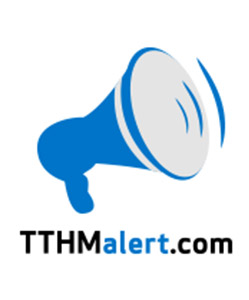Should we be better informed about the quality of our drinking water?

In our up-to-the-minute, news-driven, high-tech world, consumers can demand and receive information on just about everything from the ingredients of their favourite foods to their local air-quality index. Isn’t it a little strange, therefore, that we know so little about the quality of the water we use on a daily basis for drinking and washing? And even if nowadays some of us do get information about the quality of this vital resource, it often takes many weeks after the analysis has been done and long after we have used the water for the information to reach us.
Of course, for decades this was down to a technical and information gap, whereby, even experts either did not have sufficient information at hand or, more recently, they did not have the technology to relay this important information to us in anywhere near a real-time fashion.
And today? Well, many of us are alerted about the sometimes-inferior quality of our water, but only after the fact – which raises the question about what use the information is to us many weeks after the quality of our water has been measured to be so clearly lower than legal standards?
Indeed, if the fact that we receive such important information at such a late juncture were not enough of a worry, it is compounded by the knowledge that this need not be the case: as a few examples highlight, the technology is in place, it is proven and it is already regularly relaying water-quality information to millions.
In Seoul, the capital of the innovation-rich and tech-loving capital of South Korea, administrators have created Seoul Water Now, an unmanned system of checks and controls on the city’s water supply. Key, however, is that the system has an interactive public face in the form of an accompanying website that provides the city’s near-10 million residents with a whole raft of information about the quality of the water they use to wash, cook and drink.
Initially set up in 2005 after an investment of around 4.8 billion won (US$4m), the beauty of such a scheme is clear today: with information gathered from 99 measuring points and analysers, Seoul’s population can use a website to check the quality of the water they use in real time, 24 hours of every day.
Though a fine example, Seoul’s intelligent and transparent relaying of such important consumer information is not unique. The US cities of Benicia, Sunnyvale, California, and Lowell, Massachusetts, for example, are also at the progressive forefront in the quest to provide their populations with real-time and easily accessible information about the quality of their water supply.
Aqua Metrology Systems (AMS) is the British high-tech firm behind the latest innovation, with the clear beneficiaries of their technology, the THM-100, being consumers. Installed in 2013, it took its team of scientists and engineers in Silicon Valley five years to perfect the cutting-edge technology that accurately measures the presence of harmful carcinogenic Trihalomethanes (THMs) in drinking water and relays that information 24/7 to consumers via the AMS website: www.tthmalert.com. The THM-100 is fully automated and can provide real-time data at critical points in a city’s water network. This system takes hourly readings of water quality and if there is any change in the quality of the drinking water, the water utility can easily react rapidly to optimize treatment.
Already, several water companies in Europe and the US who have invested in AMS’s technology are able to act quickly to fluctuating THM levels, for instance, and minimise excessive treatment. Consequently, they are reducing their use of chemicals and energy while at the same time decreasing their carbon footprint.
As Scott Rovanpera, superintendent of the Benicia Water Treatment Plant, has indicated:
“At the City of Benicia Water Treatment Plant, we strive to produce the highest quality water possible for our customers. Transparency is critical to the success of this relationship and making our THM results public illustrates not only our confidence in our ability to manage our water production to the highest levels possible, but also our confidence in the THM-100 as an instrument for monitoring THM levels.”
While consumers have a right to know what is in the water they drink, increasingly strict regulations by water and health authorities make a more accessible flow of water-quality information for consumers an increasing obligation for utility companies around the world.
Rick Bacon, CEO of AMS, provides an apt summary:
“Real-time monitoring of water quality is an innovation that benefits the environment and improves consumer confidence in their drinking water supplies. There is now no technical reason why more cities do not take advantage of this technology to satisfy modern consumer and water-company needs for timely information about the quality of a critical resource.”
Which raises the all-important question: why shouldn’t we all be better informed about the quality of the water we consume daily?
———————————–
[Sources]
Seoul Water Now info by The Office of Waterworks Seoul Metropolitan Government: http://water.seoul.go.kr/sudohome/eng/overview.php
Seoul Water Now: http://water.seoul.go.kr/waternow/RealDataFullScale.php
Seoul population: https://www.cia.gov/library/publications/the-world-factbook/geos/ks.html